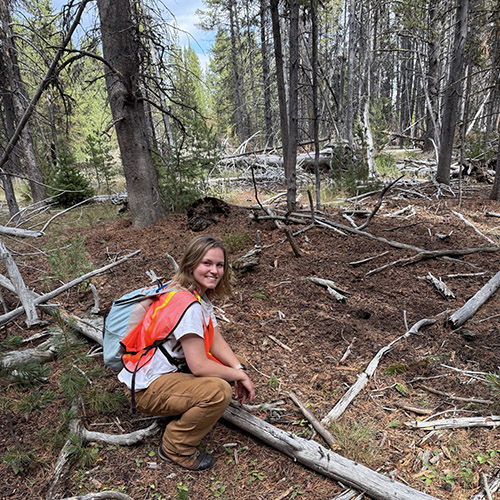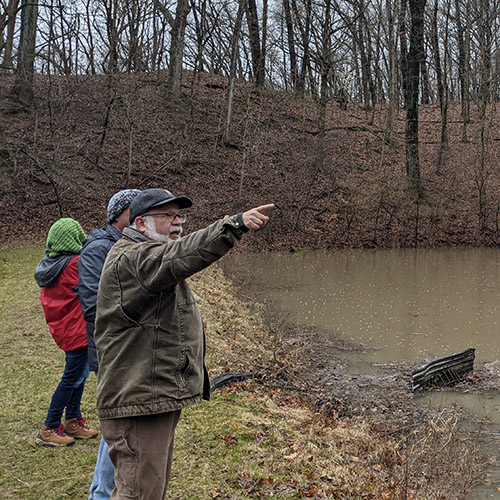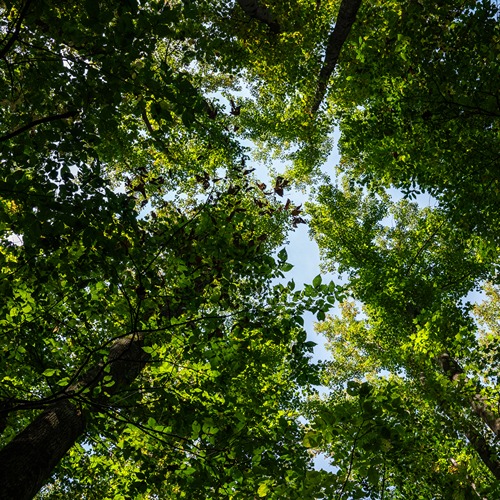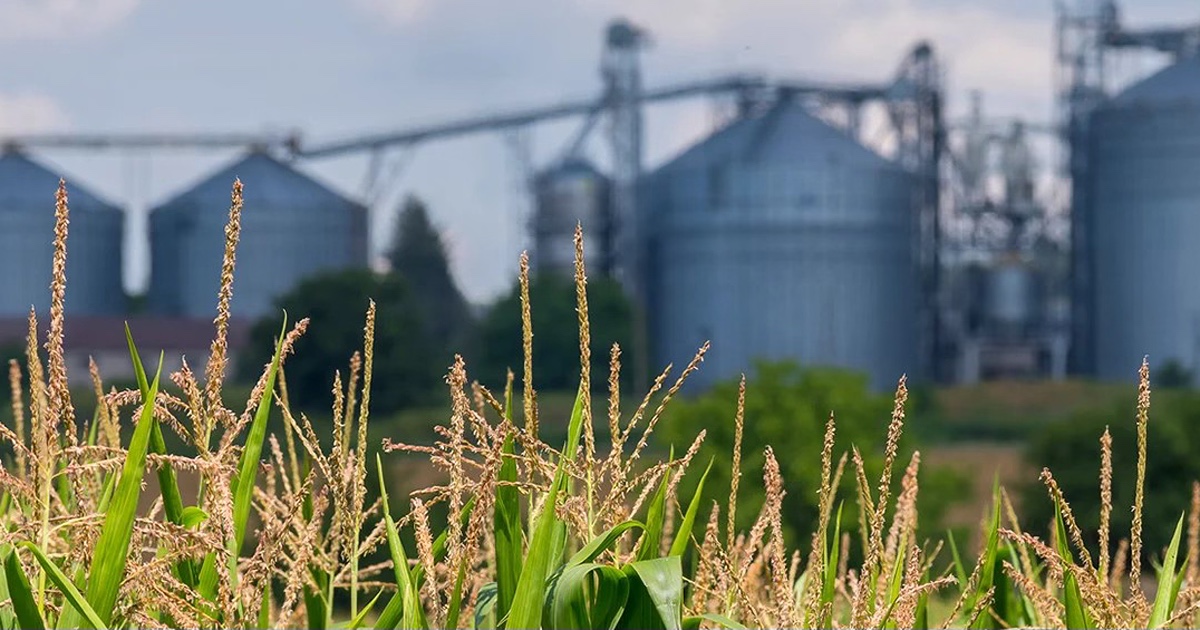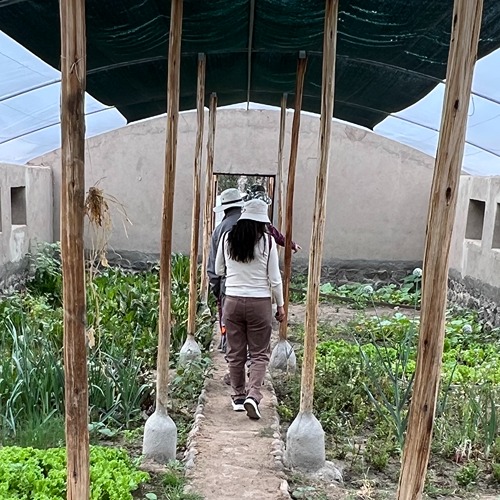Studies assess feasibility of aquaculture wastewater treatment methods
Results move toward more environmentally sustainable food systems
Aquaculture production operations that help feed the world’s growing population also generate polluted wastewater that harms the environment. Four studies published by Purdue University scientists since last May document the feasibility of previously unproven methods for successfully treating the wastewater.
“Those wastewaters are not good for the environment because they discharge a large amount of nutrients like nitrogen and phosphorus,” said Jen-Yi Huang, associate professor of food science. These nutrients cause harmful conditions such as oxygen depletion and algae blooms when they are discharged into the aquatic environment.
“We want to use microalgae as a wastewater treatment approach. We grow algae in the aquaculture wastewater,” said Huang, who led a study focusing on microbial use of nutrients as a biological wastewater treatment method.
Huang’s study appeared in the May 2024 issue of Bioresource Technology. Halis Simsek, assistant professor of agricultural and biological engineering, led the other three studies. One will be published June 1 in Environmental Research, and the others were published in the March 15, 2024, and Aug. 15, 2023, issues of Environmental Pollution.
A dozen scientists at Purdue and institutions in Egypt, India and Turkey contributed to the research. All four studies were funded by a $10 million grant from the U.S. Department of Agriculture National Institute of Food and Agriculture aimed at increasing Midwestern seafood production and consumption.
In Bioresource Technology, Huang and his co-authors presented the results of their life cycle assessment (LCA) on microalgae-based treatments of wastewater from a recirculating aquaculture system for shrimp. The LCA analyzed the environmental impact of the shrimp production process from feed production to wastewater treatment for a commercial farm in Fowler, Indiana.
“The result of this paper provides the proof of concept on an experimental scale,” Huang said.
The USDA projects seek to develop zero-waste aquaculture (growing aquatic organisms under controlled conditions) and aquaponics (combining aquaculture with plant cultivation in nutrient-enriched water) systems. “We want to fully recover the nutrients from the wastewater using microalgae,” Huang said.
The goal is to ensure that zero-waste food production is both technically feasible and environmentally sustainable. The latter requires a production system that avoids generating a large environmental footprint.
“There is a trade-off because operating the microalgae wastewater treatment still requires some energy input,” Huang said. “The LCA evaluated the tradeoff between the nutrient recovery and additional energy input for the algal wastewater treatment.”
 Food Science graduate student Juan Velasquez Domingo takes a sample of waste water being cleaned with algae to test the water quality. Velasquez is part of a project to create a pilot-scale aquaponic system using algae for waste water clean up. The surplus algae will also be harvested and processed into value-added products.
Food Science graduate student Juan Velasquez Domingo takes a sample of waste water being cleaned with algae to test the water quality. Velasquez is part of a project to create a pilot-scale aquaponic system using algae for waste water clean up. The surplus algae will also be harvested and processed into value-added products. Huang’s team found that the microalgae wastewater treatment process is environmentally feasible. Further, the team found that even with the energy requirements factored in, the microalgae treatment works better than the conventional activated-sludge wastewater treatment method.
“Using the microalgae as the wastewater treatment method can indeed improve the environmental performance of aquaculture production,” Huang said.
All three studies by Simsek’s team were conducted at Purdue’s Aquaculture Research Laboratory. In two of those studies, the scientists analyzed treating separate tilapia and shrimp wastewater streams with the same four strains of algae and two strains of bacteria.
“Wastewater always has bacteria,” Simsek said. “We are using natural bacteria that already exist in the wastewater to remove contaminants.”
The research team measured nitrate, nitrite, ammonium and other parameters in the wastewater during the experiments. These included chemical oxygen demand, a measure of environmentally harmful effluent discharge.
“All these parameters can be removed in the wastewaters using algae and bacteria together,” Simsek said. The types of algae and bacteria selected for the study are the most commonly occurring natural strains. “Every wastewater is different,” he noted, meaning that different industrial sectors produce different wastewater and, therefore, may need different treatment methods.
The March 15 Environmental Pollution study results demonstrated the potential for applying microalgae and native bacteria together for treating larger-scale tilapia wastewater.
In the 2023 study, Simsek and his co-authors evaluated electrocoagulation (EC) and electrooxidation (EO) treatments of shrimp wastewater, both separately and together. EC and EO, widely used methods for treating agricultural and other types of wastewaters, remove pollutants via electricity to drive chemical reactions.
The researchers also applied a modeling approach often used to determine optimal factors that affect the electrochemical method.
“The results of the study show EC and EO processes are potentially beneficial for the treatment of aquaculture wastewater,” Simsek and his co-authors wrote. They suggested larger-scale testing of EC and EO for the treatment to reduce toxic environmental effects.
“The developed treatment system combined with other treatment methods could be useful to treat various types of wastewaters throughout the world, which can help support the development of the zero-waste policy,” they wrote.
Huang and Simsek contributed to all four papers, along with professor Paul Brown and postdoctoral research associate Aya Hussain, both in forestry and natural resources.


